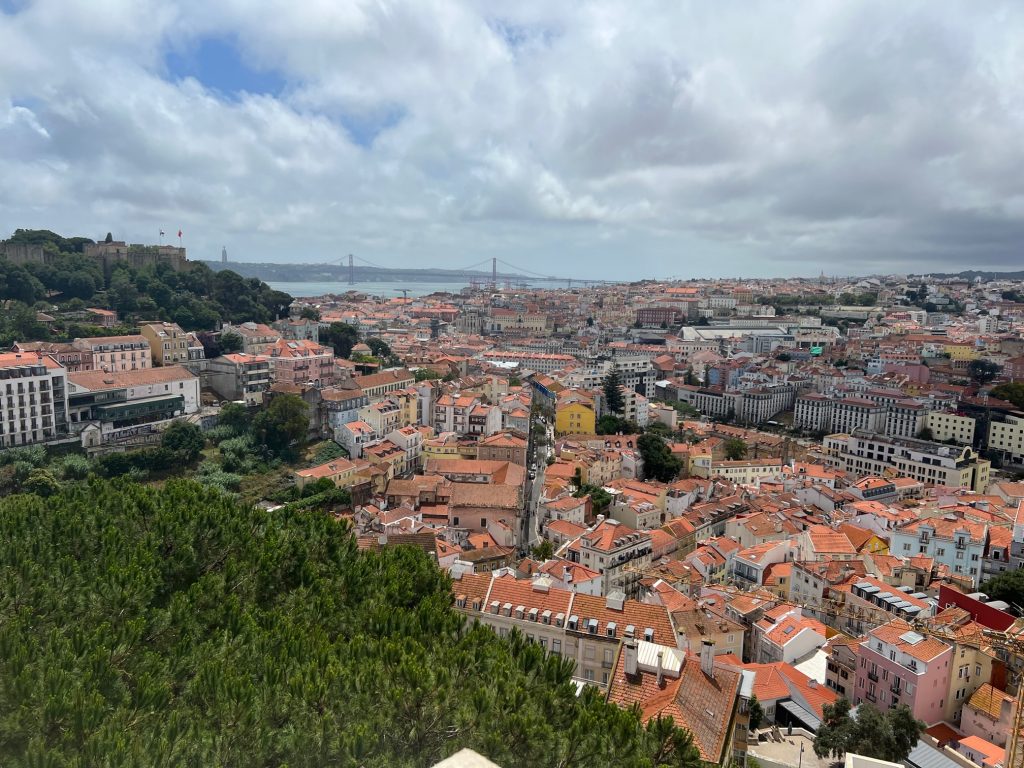
For most big cities around the world, visiting for only one day won’t do it justice. But when that’s all you have, how do you make the most of it?
I did just that on a post-cruise extension after a Costa del Sol, Andalucia, and Algarve sailing of the Scenic Eclipse II.
I was fortunate to be given early check-in to my guest room at Pousada de Lisboa, walking distance from the cruise port. Getting access to my room so early in the day enabled me to drop off my luggage and begin exploring the city.
The Pousada de Lisboa is very near the Tagus River waterfront in the flat center of the city close to three large plazas and major monuments. But the full character of Lisbon is in the adjacent neighborhoods with steep climbs up and down hills, reminding me of San Francisco albeit more narrow winding brick streets. Similar to San Francisco, Lisbon also has cable cars that travel up and down the steep streets.
Need help planning your trip? Click here to find a MAST Travel Advisor near you. MAST Travel advisors are here to help with all your travel plans and needs.
Barrio Alto
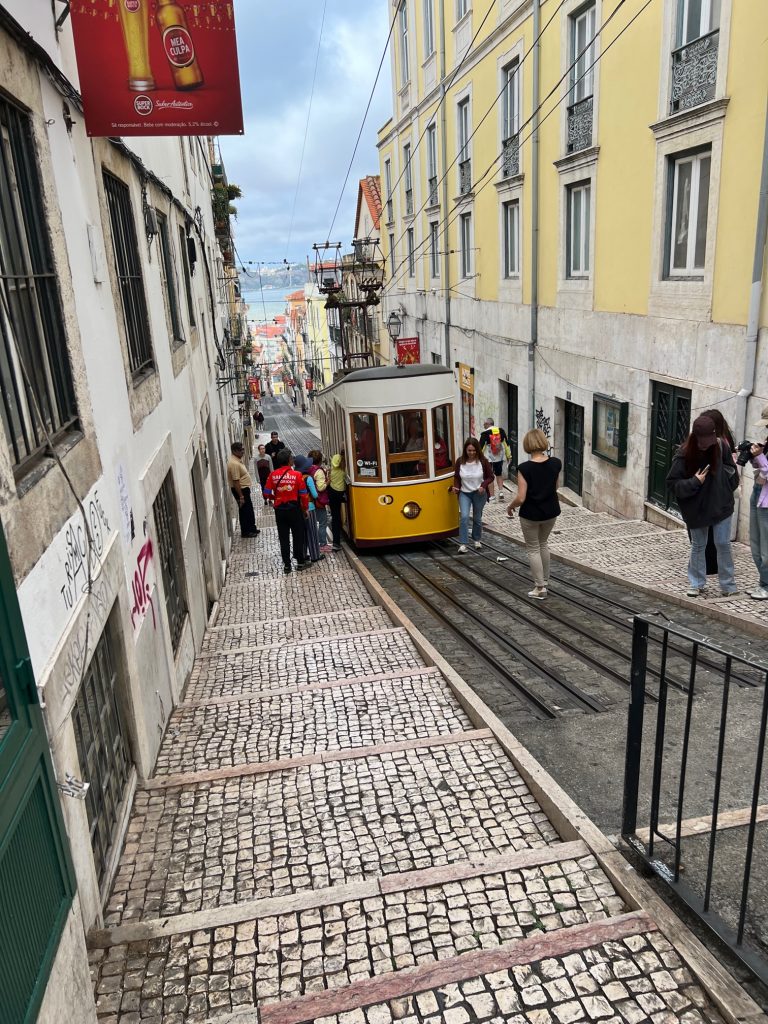
I first set out to explore Barrio Alto, a very residential neighborhood. After making it to what I think was the highest point in the part of the city, I rested on a park bench overlooking the city. with views of the other neighborhoods perched on the city’s famous hills. Along the way, you can enjoy food and beverage stalls offering what locals eat as well as food fest favorites one would find in parks and outdoor festivals in the U.S.
After 15 or 20 minutes of taking in the views, I continued on. Instead of walking down the sloping streets, I took the steps. I didn’t count the number of steps, but this route was not for the faint of heart. This gave me an amazing perspective of the city’s culture. No cars, just people venturing on foot in and out of apartment buildings, shops, and little restaurants, coffee shops, and pubs.
Food & Culture In Lisbon
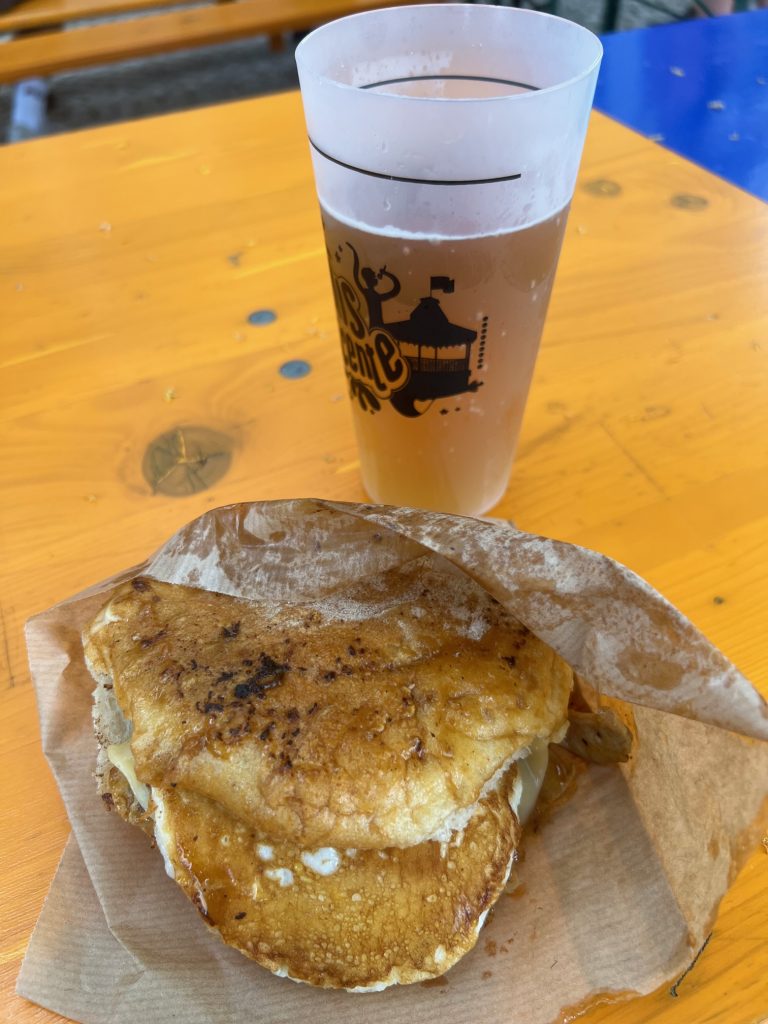
Once I made it to the flat center of the city and walked through two of the main squares, I set my sights on the other big hill and the historic neighborhood of Alfama. The streets in Alfama are more narrow and winding than Barrio Alto. This is a very charming and popular neighborhood for both locals and tourists. To my surprise, I discovered some wonderful museums, the oldest churches in the city, dozens of sidewalk cafes, and more spectacular views.
I stopped for lunch at an outdoor grill and picnic area, similar to a hot dog stand you’d find in the U.S. I ate a bifana, a popular sandwich in Portugal, considered a national dish. It is made with a toasted sandwich roll, stuffed with a grilled seasoned pork steak that washes down well with a local beer. There are variations of the sandwich. Mine had a fried egg and cheese in it. It was a bit messy, but so worth it.
After eating, I set out to visit a few more museums and churches in the area. First stop, the Lisbon Cathedral, which was filled with worshippers as it was Feast of Corpus Christi in the Catholic Church. This religious holiday is a big deal in Portugal.
Church and Convent of Our Lady of Grace
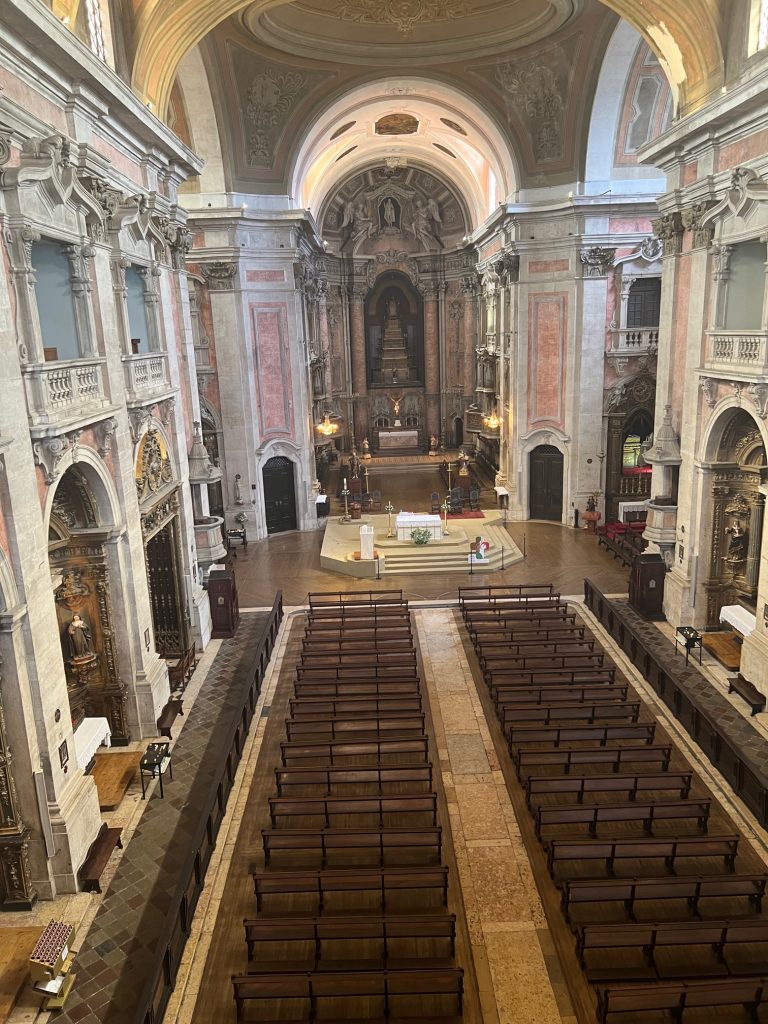
Next stop, Igrejae Convento de Gracas or Church and Convent of Our Lady of Grace. The original church built in 1291 was destroyed in the 1755 earthquake. It was rebuilt in the baroque style. The convent has a beautiful cloister and walls covered in 18th century blue tiles. The convent also hosts rotating temporary works from local artists. The balcony in the back of the church offers a wide view of the gorgeous architecture of the rebuilt church.
The Monastery of St. Vincent de Fora
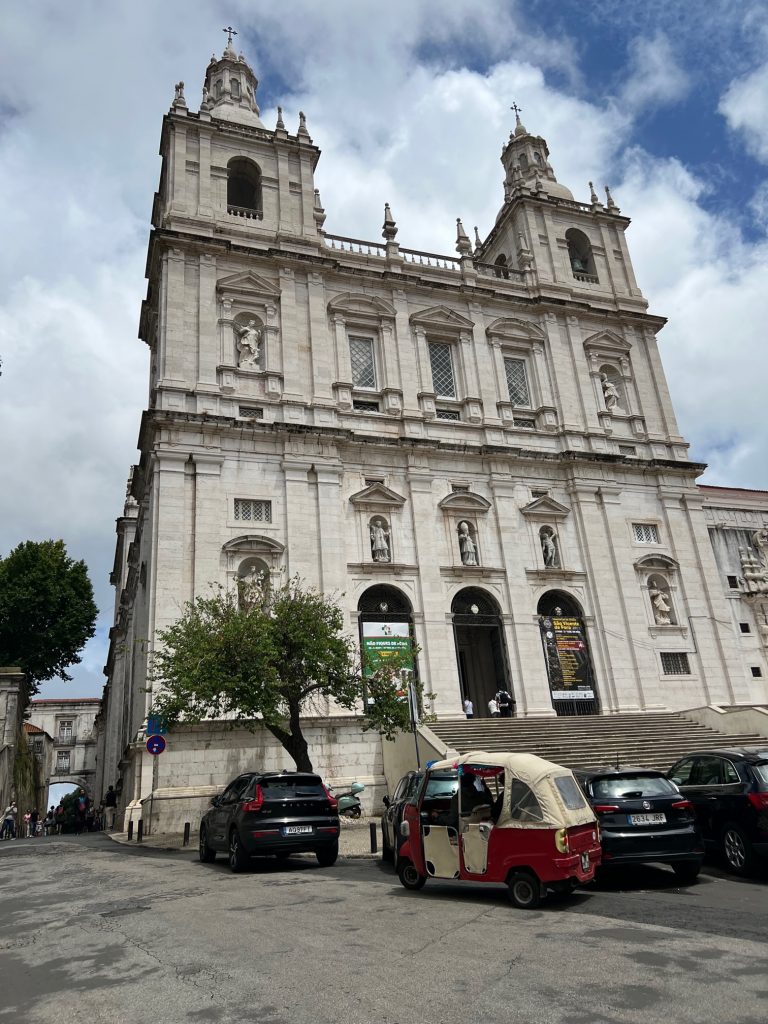
My next visit was to Mosteiro de Sao Vicente de Fora or The Monastery of St. Vincent de Fora. I was in awe at all there was to see in this building and connecting buildings. There is a 12th century cistern that collected rainwater, the noble entrance to the monastery decorated with inlaid marble and glazed tile panels, the main church and sacristy, still in use today, with inlaid marble of floral motifs, the Pantheon of Patriarchs’ tombs, and several chapels throughout the complex. There are exhibit areas of various artists and artifacts.
Last Stop – Castle of St. George
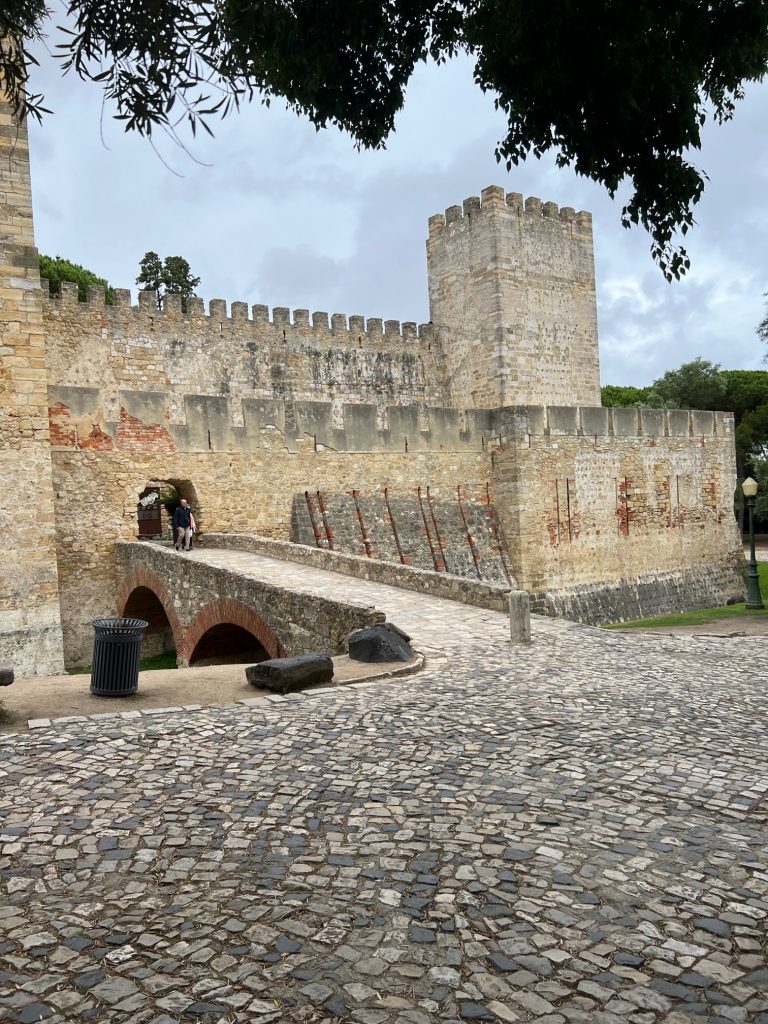
My last stop of the afternoon was the Castelo de Sao Jorge or Castle of St. George. The oldest fortifications on this site were built by the Phoenicians, Carthaginians, Romans, and Moors. In the 12th century the castle served as a royal palace and today a national monument.
One other observation I will share refers to the catastrophic earthquake of Nov 1, 1755. Lisbon was destroyed and over 12,000 people were killed. In every church I walked into, it appeared the lower half of the new church was rebuilt from the materials in the ruins of the collapsed buildings, but the upper half of the church was reconstructed with more modern engineering styles of vaulted ceilings and less use of columns. Most churches did not have stained glass windows. Undoubtedly shattered in the earthquake.
I ended my one day in Lisbon with dinner at a small restaurant on the steps leading up the hill in the Barrio Alto neighborhood. Of course, I had to have the cod sauteed in butter and topped with a rich tomato and olive mixture, another Portuguese national dish.
Though I covered a lot of ground in one day, there is a lot more to see in Lisbon and I look forward to returning with more time to enjoy.
